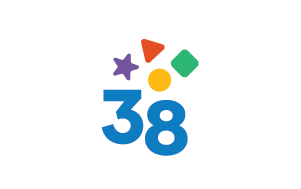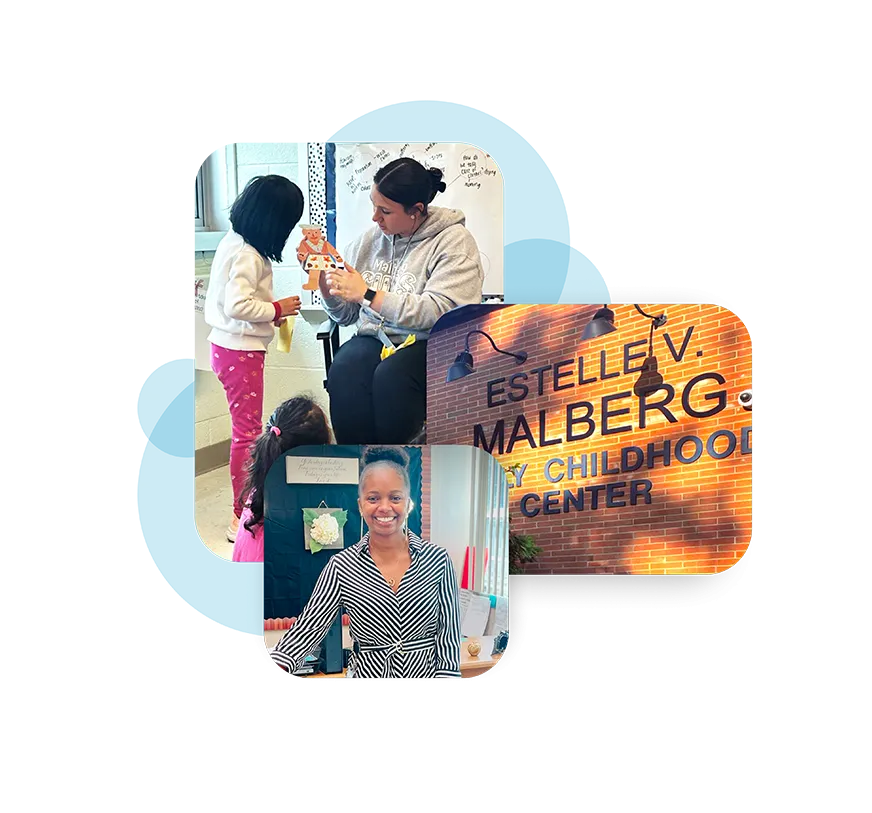Challenge
Upon assuming the role of principal at Malberg Early Childhood Center in 2022, Danyelle Edwards made it her priority to find a partner who could support her vision of following the Universal Design for Learning model.
Provide the least restrictive environment for learning, allowing children to learn alongside their typically developing peers.
Ensure children with disabilities can participate in the same activities as their typically developing peers in a significant and enriching manner.
Address the substantial teacher turnover by empowering her program’s education professionals—from therapists to novice teachers—through comprehensive professional development.
Solution
Danyelle was confident that The Creative Curriculum and GOLD could support her vision to create an inclusive environment because both offered unique support for children with disabilities, including
 |
Provide the least restrictive environment for learning, allowing children to learn alongside their typically developing peers. |
 |
Ensure children with disabilities can participate in the same activities as their typically developing peers in a significant and enriching manner. |
 |
Address the substantial teacher turnover by empowering her program’s education professionals—from therapists to novice teachers—through comprehensive professional development. |
In the fall of 2022, the Malberg Early Childhood Center partnered with Teaching Strategies to conduct a successful implementation of curriculum and assessment tools that empowered teachers and therapists to work together through ongoing professional learning.
Results
Here is why partnering with Teaching Strategies has been so powerful for children with disabilities at Malberg.
Inclusivity Flourishes: The Creative Curriculum’s Impact
The teachers in inclusive classrooms and the therapists in self-contained classrooms expressed their excitement about The Creative Curriculum’s unique approach and how it allows children with disabilities to engage in the same learning experiences and practice the same skills as their peers. Additionally, the staff received the detailed guidance they needed to nurture each child’s development and provide truly individualized instruction.
The Creative Curriculum gives teachers the support they need to meet each child where they are, no matter their developmental level,” Danyelle said. “It shows them what learning looks like for a child that’s performing at a 2-, 3-, or 4-year-old level and above.
Connecting Curriculum and Assessment
Danyelle noted how The Creative Curriculum and GOLD address the critical skills children with disabilities are working toward and how both help inform a child’s Individualized Education Program (IEP).
With GOLD, tracking a child’s progress is also no longer an extra task teachers must do; they can capture observations in the moment by taking photos or videos—and so can children’s families. Using this data, teachers can identify a child’s developmental level and then search for daily resources from The Creative Curriculum that align with particular skills they wish to focus on.
Inclusive Exploration: Celebrating Learning Together
Danyelle and the staff appreciate how the studies within The Creative Curriculum provide the opportunity for children with disabilities to bring in prior knowledge about topics they have been exposed to in their everyday lives, such as clothing, balls, boxes, or music.
With The Creative Curriculum, all children—those with disabilities and their peers—can explore, investigate, and celebrate their learning together. At the end of the Clothing Study, for example, children celebrated their learning with a fashion show. Every child participated, and their families came to watch as they walked the red carpet.
Unity of Teachers, Therapists, and Families
At Malberg, teamwork is a top priority, and that means children, teachers, and families all work together as one. Both teachers and therapists have worked with Teaching Strategies coaches to foster progress among children with disabilities through professional development.
“When teachers and therapists work together, we’re able to provide consistent opportunities for learning in all aspects of the day,” said Zenetta Bronson, a preschool inclusion teacher. “It also provides children with more opportunities to practice their skills.”
Empowering Inclusive Learning at Malberg
As Malberg continues moving forward, it’s important to celebrate the remarkable strides they’ve made in just a few months to fulfill their mission of creating classrooms where children of all ability levels play and learn together.
And they’ve done it by finding a true partner in Teaching Strategies
Malberg Early Childhood Center
New Jersey
• 350 children ages 3 to 5
• 40% are children with disabilities
• 6 inclusion classrooms
• 8 self-contained classrooms
